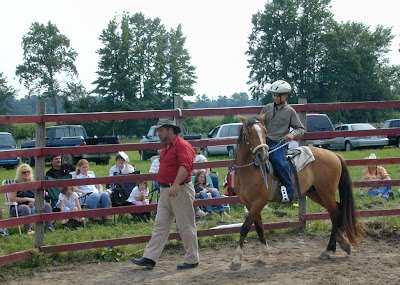
I guess the best thing that I can say is that I am surprised that I failed so badly yesterday. I really did not expect failure, but it found me at around 7:30 last night. I really planned to ride 100 miles in one day. We began riding at at 3:15 in the morning and I gave up after only 65 miles. I may be joining the ranks of the many who have discovered that they not only are not the men they once were, but that they were never the men that they once were.
Failure was perhaps foreseeable, but what happened on the first leg of the effort was not. I often forget to remove my glasses when riding in the dark. (They are tinted and reduce even the small amount of light that exists in the woods at night from reaching my corneas.)As we set out after 3:00 am I remembered to take them off.
Without my glasses I have very poor vision. I have gotten used to not being able to see things that are there but am still entertained by the fact that without my glasses I often see things that are not there. For example, when riding in the darkness I often find myself swerving to avoid trees that are clearly directly in my path and could cause serious injury to me or my horse, but for the fact that they do not exist. The illusions are interesting. I had several such illusions yesterday morning but then I encountered something that was a bit chilling. (This is not a joke).
Lydia was riding Owl Prophet who prefers to hang back a bit from the horse ahead of him, even in the day light. She was far enough behind me so that I could not hear his hooves strike the ground as we cantered along. (Again, no big deal in that, aside from needing glasses and having only a few more teeth than the average rooster, my hearing is beyond impaired.)
On occasion when riding in the darkness I see patches of lighter spaces a head of me. I assume that they are spots where moonbeams reach the forest floor. What I saw ahead of me was not a patch of lightness. About fifty yards ahead of me the trail was glowing. I yelled back to Lydia to ask her what was going on in front of us. I had never seen such a burst of light.
She told me that there was nothing there. She said that she could not see any light in front off us at all. As she is telling me this I continued to see the path ahead of me lit up like the premier screening of a movie in the 1930's.
We changed direction. We got on with the ride. Obviously, what ever I saw was merely an illusion resulting from the darkness and my poor eye sight. Obviously, that must be the case because Lydia saw nothing. I am a grown, and often rational man. Obviously I should never have any concern about riding through there again in the darkness, even by myself.
But I will not do that even though Lydia saw nothing. I was riding Holland. Holland does not rear, ever. When someone turned on the lights in the middle of the woods Holland began rearing. Lydia did not see anything, but Holland and I did.
This is a picture of Holland, my great Shackleford Spanish mustang, a few days after he came to live with me. He is a calm, rational horse.
Like Mark Twain, he does not believe in ghosts at all but he is afraid of them.






















